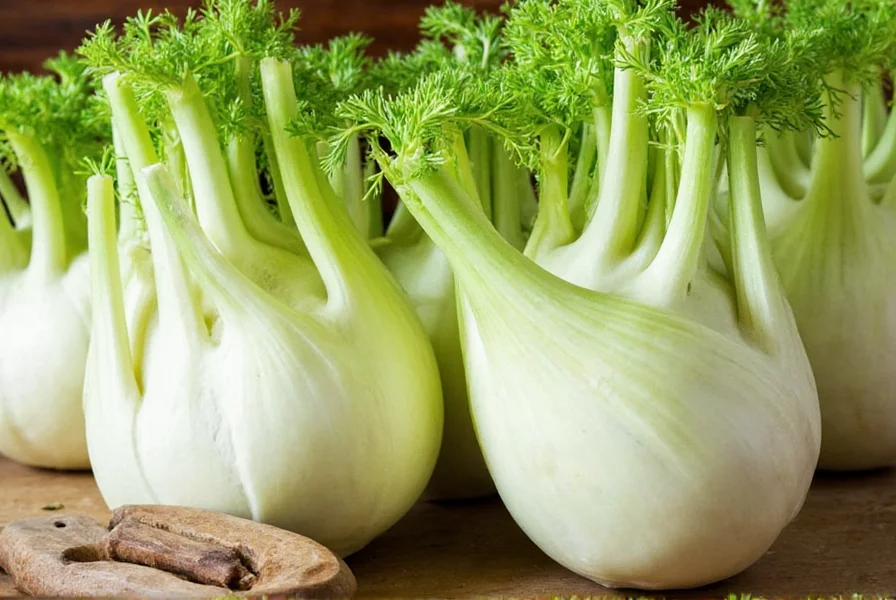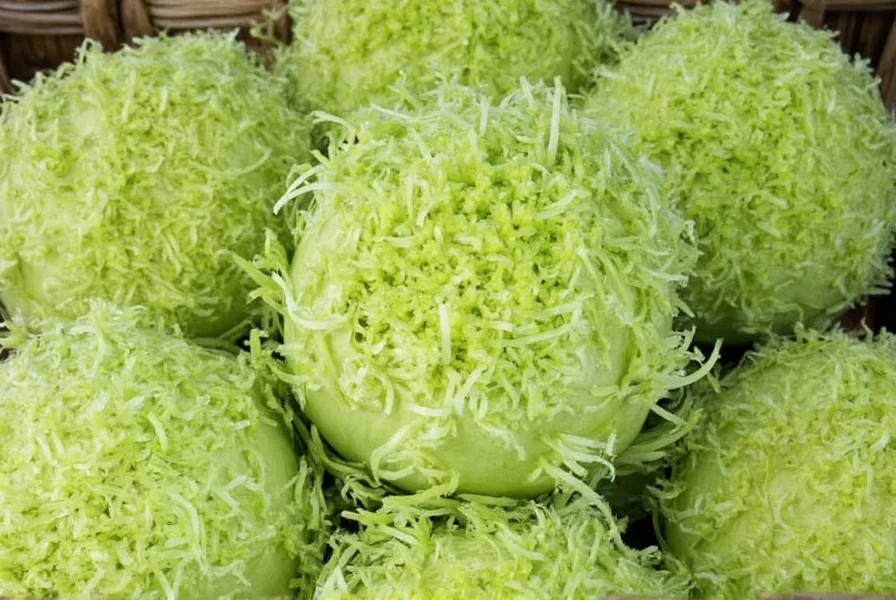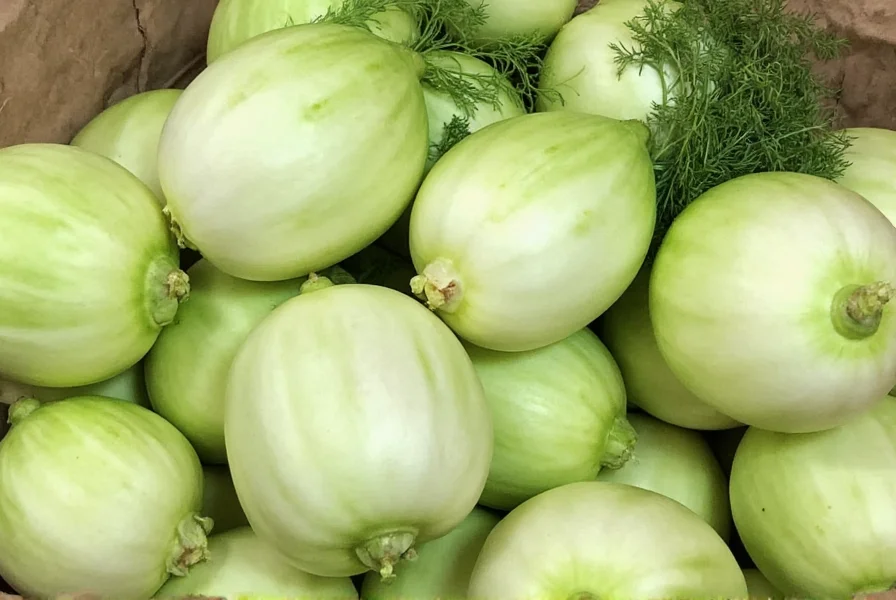Florence fennel (Foeniculum vulgare var. azoricum), also known as finocchio or sweet fennel, is a bulbous vegetable variety of fennel cultivated for its crisp, white bulb rather than just its seeds and fronds. Unlike wild fennel which grows primarily for its aromatic seeds and feathery leaves, Florence fennel develops a substantial, rounded bulb that's prized in Mediterranean cuisine for its mild anise-like flavor and crunchy texture.
When you're exploring what is Florence fennel and how it differs from other varieties, you'll discover this unique vegetable offers culinary versatility that spans raw preparations to roasted dishes. Chefs and home cooks value Florence fennel for its dual nature—providing both a crunchy vegetable component and aromatic herb qualities from its bulb, stalks, and feathery fronds.
Understanding Florence Fennel Characteristics
Florence fennel stands apart from its wild counterpart with several distinctive features. The most notable difference is the swollen, bulb-like base that forms just above the roots. This bulb, which can reach 3-5 inches in diameter, consists of tightly packed leaf bases that create a dense, layered structure similar to celery root or onion.
The entire plant is edible, offering multiple components for cooking:
- Bulb: Crisp, juicy, with mild licorice notes
- Stalks: Similar to celery in texture but more delicate
- Fronds: Fine, dill-like foliage with concentrated fennel flavor
- Seeds: More aromatic than common fennel seeds
| Feature | Florence Fennel | Wild/Common Fennel |
|---|---|---|
| Primary Use | Bulb as vegetable | Seeds and leaves as herb |
| Bulb Development | Pronounced, edible bulb | Minimal or no bulb formation |
| Flavor Intensity | Milder, sweeter | Stronger, more pungent |
| Culinary Applications | Raw salads, roasting, braising | Seasoning, tea, flavoring |
Nutritional Profile and Health Benefits
Florence fennel delivers impressive nutritional value beyond its culinary appeal. A one-cup (135g) serving of raw fennel bulb contains approximately:
- 27 calories
- 3g dietary fiber (11% of daily value)
- 10% of daily vitamin C needs
- Significant potassium and manganese
- Antioxidants including flavonoids and phenolic compounds
The Florence fennel nutritional benefits extend to digestive health, as compounds in fennel may help reduce bloating and improve gut motility. Its anethole content provides anti-inflammatory properties, while the fiber content supports healthy digestion—making it particularly valuable in Mediterranean diets known for promoting longevity.
Selecting and Storing Florence Fennel
When choosing how to select Florence fennel at the market, look for bulbs that feel heavy for their size with crisp, bright white layers. Avoid specimens with brown spots, splits, or flowering stalks emerging from the center, as these indicate age and potential toughness.
Proper storage significantly extends freshness:
- Refrigerate in a plastic bag for up to 5 days
- For longer storage, trim stalks and fronds, then submerge bulb in water
- Do not wash until ready to use to prevent premature spoilage
- Store fronds separately in a damp paper towel
Preparation Techniques for Best Results
Mastering how to prepare Florence fennel properly unlocks its culinary potential. Start by trimming the root end and stalks, then remove any tough outer layers. The core can be quite fibrous, so many chefs recommend cutting the bulb in half and removing the tough center core before slicing.
When preparing Florence fennel for raw applications like salads, slice thinly using a mandoline for consistent thickness. To prevent browning, toss slices with lemon juice immediately after cutting. For cooked preparations, the core can often remain intact as heat softens its fibrous structure.

Culinary Applications and Flavor Pairings
The versatility of Florence fennel makes it valuable across multiple cooking methods. When raw, it provides a refreshing crunch with subtle sweetness that works beautifully in salads. Cooking transforms its flavor profile—roasting caramelizes natural sugars while braising creates melt-in-your-mouth tenderness.
Excellent flavor pairings include:
- Citrus fruits (orange, lemon, grapefruit)
- Fish and seafood (particularly salmon and white fish)
- Olive oil and lemon-based dressings
- Olives and capers for Mediterranean dishes
- Cheeses like feta, pecorino, and goat cheese
Popular Cooking Methods
Understanding best cooking methods for Florence fennel helps maximize its potential in your kitchen:
Raw Preparation: Thinly slice bulb for salads, combining with citrus segments, olives, and a light vinaigrette. The fronds make an excellent garnish.
Roasting: Cut bulb into wedges, toss with olive oil, salt, and pepper, then roast at 400°F (200°C) for 25-30 minutes until caramelized and tender.
Braising: Slice bulb thickly, sauté until golden, then add broth or wine and simmer covered until fork-tender—ideal for winter dishes.
Grilling: Cut into thick slices, brush with oil, and grill over medium heat for 3-4 minutes per side for smoky flavor.

Growing Florence Fennel at Home
For gardeners interested in growing Florence fennel in home garden conditions, this cool-season crop performs best in spring or fall. It requires well-drained soil, consistent moisture, and approximately 8-10 weeks of cool temperatures to develop proper bulbs.
Key growing tips:
- Plant seeds directly in garden after last frost
- Space plants 6-8 inches apart in rows 18-24 inches apart
- Blanch developing bulbs by mounding soil around base
- Harvest when bulbs reach tennis ball size (about 3 inches)
- Avoid planting near dill or coriander to prevent cross-pollination
Common Substitutions and Availability
When substituting Florence fennel in recipes, consider these alternatives based on preparation method:
- For raw applications: celery, jicama, or endive
- For cooked dishes: bok choy, celery root, or mild cabbage
- For flavor profile: a combination of celery and茴香 seeds (use sparingly)
Florence fennel typically appears in markets from late summer through early winter in most regions, with peak availability in fall. Look for it in the produce section near other specialty vegetables like kohlrabi and celery root.
Frequently Asked Questions
Is Florence fennel the same as regular fennel?
No, Florence fennel (Foeniculum vulgare var. azoricum) is a specific variety cultivated for its edible bulb, while regular or wild fennel primarily grows for its seeds and feathery leaves with minimal bulb development. Florence fennel has a milder flavor and substantial bulb that serves as the main vegetable component in dishes.
Can you eat the entire Florence fennel plant?
Yes, all parts of Florence fennel are edible. The bulb serves as the primary vegetable component, the stalks can substitute for celery in recipes, the feathery fronds work as a fresh herb similar to dill, and the seeds (when mature) offer more aromatic flavor than common fennel seeds. Each part has slightly different flavor intensity and culinary applications.
How do you reduce the licorice flavor of Florence fennel?
Cooking Florence fennel significantly reduces its licorice notes. Roasting, braising, or grilling caramelizes natural sugars and transforms the flavor profile to become sweeter and more complex. For raw preparations, pairing with acidic ingredients like lemon juice or vinegar helps balance the anise flavor. Combining with complementary flavors like citrus, olives, or strong cheeses also creates balance in dishes.
What's the best way to store Florence fennel to maintain freshness?
Store Florence fennel in the refrigerator's crisper drawer in a perforated plastic bag for up to 5 days. For extended freshness, trim the stalks and root end, then stand the bulb upright in a container with about an inch of water, covering loosely with a plastic bag. Change the water every two days. Do not wash until ready to use, as excess moisture accelerates spoilage.











 浙公网安备
33010002000092号
浙公网安备
33010002000092号 浙B2-20120091-4
浙B2-20120091-4